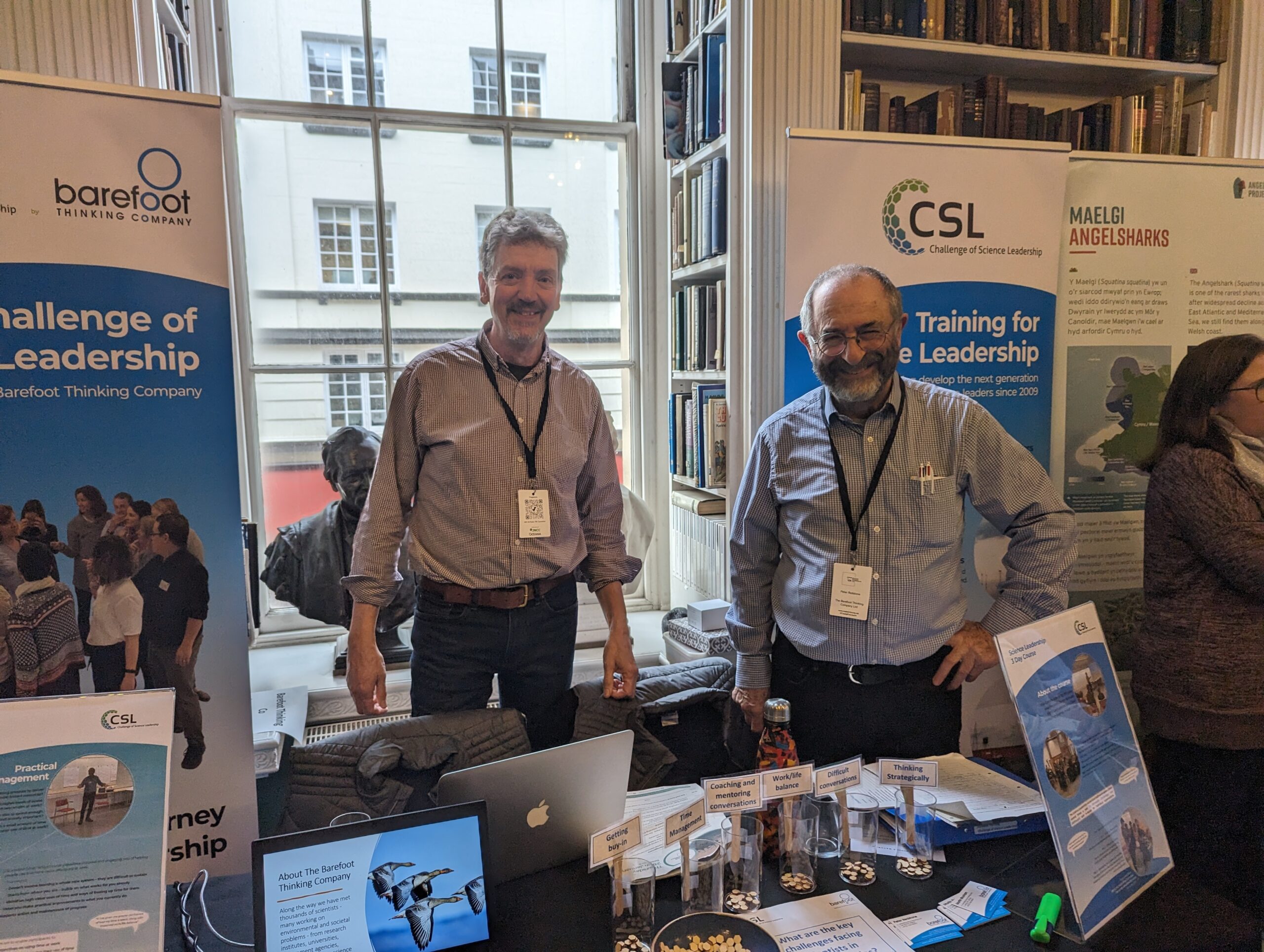Two weeks ago, we attended the excellent Coastal Futures 2024 Conference in London as a sponsor of the event. In this article, I’m reflecting on our attendance at this conference and my previous blog article on The Power of Networking.
So, what did we get out of sponsoring and attending the conference?
1. The feeling of being part of something bigger than ‘me’ or Barefoot
In the previous blog, I said that one of the key reasons for networking was the opportunity to develop interpersonal relationships, to have a shared sense of identity, and to build understanding, all of which can build trust, cooperation, and reciprocity.
I can honestly say that in this respect we really benefited from being with the Coastal Futures tribe for 2 days. I’m not a practitioner in this field any longer but the passion and drive of both those that presented, and the delegates attending was palpable, infectious, and inspirational.
Peter and I often talk about our mission to equip scientists with the necessary leadership skills, tools, and support, so that they can play their full part in addressing the multiple challenges affecting the future of the planet and its inhabitants. But we’re rarely at the coal face. The conference helped us understand our small part in the bigger picture and as a consequence, enthused and encouraged us to continue on our path.
2. The opportunity to renew old acquaintances and friendships
I was really surprised by the number of people I knew. Past participants telling us how the course had benefited them, senior leaders informing us about how their organisation had benefited from our interventions. Old colleagues from my past life as a scientist and consultant talking about their successes and challenges. Friends who I hadn’t seen in years. It was a great opportunity to reconnect.
3. Networking with new and interesting people
It’s always a privilege to talk with interesting and enthusiastic scientists and professionals working in the environmental sector. Let’s face it, most of you don’t do it for the money. You do it because you enjoy the challenge and you want to make a difference. The added benefit for us was that people also listened to our message, understood it, and wanted to learn more about the importance of science leadership in the marine sector.

4. Time to learn and think
We often say to new CSL participants that one of the key benefits of a 3-day course is being away from day to day work, which allows for an opportunity to think and reflect – with the added benefit that there will be like minded people with new ideas and perspectives. This was also a big win for us at Coastal Futures. Talking with past participants, future potential clients, and our peers working in similar areas, has helped us to sharpen our thinking about what we are doing and what we want to accomplish.
But what was missing from the conference?
This is an interesting question. I should add a caveat that this is no reflection on Coastal Futures or the organisation of the conference which was exemplary. Rather, as an outsider who was an insider, what’s missing from the conversation?
For me, there were four areas that are an historic, continuing, and future challenge for those working in all aspects of environmental science.
1. A Sea of Similarity
The subject of the conference was inclusion which was admirable but as I looked around the lecture theatre in the Royal Institution, in the heart of Mayfair, London, I observed a sea of similarity. Granted, we now have more parity in terms of gender (no more sea of grey suits), but in terms of minority groups, the environmental sector is woefully under-represented. This is similarly the case on our courses. So the big question is what can we do about this? I’m not qualified to give an answer but one of the keynotes at Coastal Futures certainly was. Srabani Sen, Founder and CEO of Full Colour talked about the three C’s of equity, diversity and inclusion. Here they are somewhat paraphrased by me: Clarity – understand what EDI is – because you most likely don’t really know; Commitment – Be serious about it, don’t just pay it lip service; Courage – Have the courage to see it through. We should take note and act.
2. The Cosy Club
I attended Coastal Futures in 2003 as a youngish proto-academic and the conversation then was about the degradation of the marine environment, the drivers and pressures of that degradation, and what the responses should be in terms of action. Fast forward 20 years and the conversation has definitely matured, but the subject is the same. The faces are different, but the challenges remain. Again, as an ‘outsider’ looking in at Coastal Futures 2024, I felt that everyone was in a safe place, to talk and discuss and debate the subject, but the safe place was a somewhat closed system – like a bubble – with plenty of support but maybe not enough challenge.
3. Who’s (not) in the room?
Part of the problem is that the whole system was not in the room. For any organisation to flourish, you need to engage the collective intelligence, creativity and energy of as wide a variety of stakeholders as possible. The more diverse the system in the room, the greater will be the innovation and potential for shared implementation. This was clearly articulated by a number of delegates, so it’s a known known. The big questions are: How do you get policy makers, the water companies, farmers, the fishing industry and all the other relevant stakeholders in the room? Should you get them in the room? And what are the risks (and rewards?)
4. Communicating beyond
This brings me on to the biggest challenge – how do you communicate your messages beyond the bubble? How do you reach all the interest groups and stakeholders? How do you reach minority and marginalised groups? What message do you need to convey to get them on board? I don’t have the answers to this, although I have thoughts developing. What do you think?



